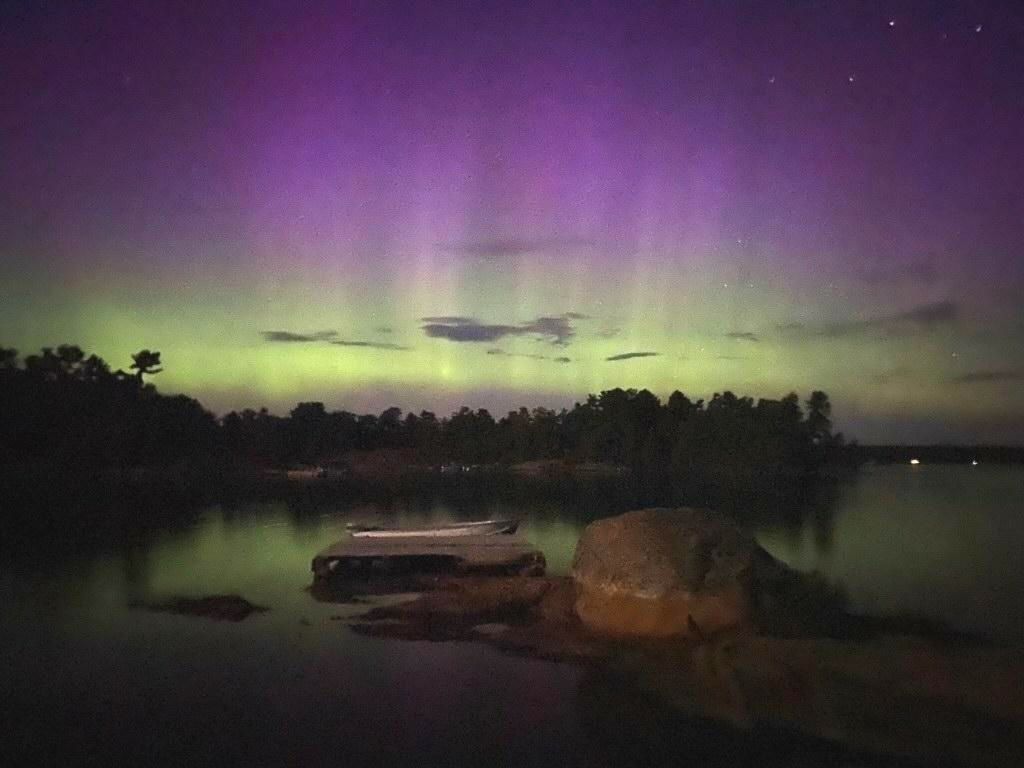by Trudy Irvine, Education Committee
Last week’s night skies brought multiple sightings of the Northern Lights over several days in Pointe au Baril. The dancing lights have fascinated and even frightened people for centuries, but as with rainbows in the sun, it is again physics; this time in the dark, that creates these truly awe-inspiring light shows.
The creation of the aurora borealis starts with solar storms on our sun’s surface spewing huge clouds of electrically charged particles. Carried on the “solar wind”, these particles travel millions of miles toward Earth.

Most particles are deflected away before reaching our planet, but some become captured in Earth’s magnetic field, and being charged themselves, accelerate towards the north and south magnetic poles. Here they enter our atmosphere, where they collide with gas molecules, “exciting” the molecules, or essentially, heating them up. The two primary gases in the Earth’s atmosphere are oxygen and nitrogen, and as they are heated, they glow different colours. Oxygen molecules glow a yellowish-green, while purple, blue or pink hues are characteristic of nitrogen. Billions of tiny flashes of these glowing gasses happening in sequence cause the lights to appear to move or dance in the sky. The auroras’ characteristic wavy patterns and “curtains” of light are caused by lines of force in the Earth’s magnetic field.
To increase your chances of seeing the Northern Lights, try installing an app like “My Aurora Forecast and Alerts” on your phone, or check the Government of Canada’s Space Weather forecast. For more information about aurora, and some truly stunning astronaut-level video, visit here.
\